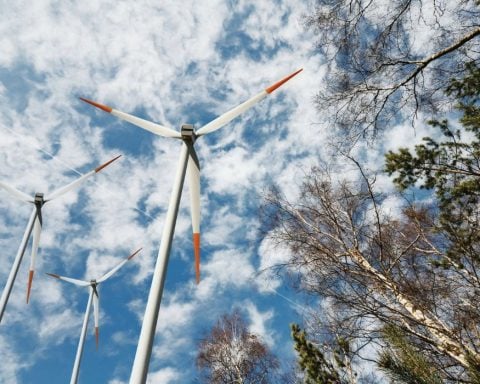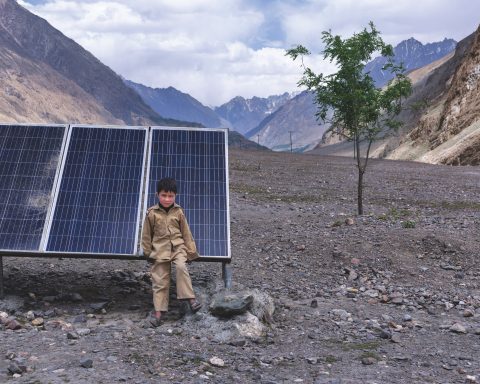In 2016, Michelle Moore set out to help bring solar panels to her hometown of LaGrange, Georgia. The CEO of non-profit Groundswell hoped to engage leaders in the city of around 30,000 residents about how they could harness renewable power. But all these officials wanted to discuss at first was energy efficiency, and how they could lower electricity and heating bills for the local population.
So she listened and followed local officials, working to gain their support and spending time to understand the needs of the people they represent and serve. This is one of the lessons Moore tries to impart in her new book, Rural Renaissance, which she hopes can serve as a roadmap for local leaders in the energy transition. Moore, who served in the Obama administration as a sustainability official, provides a how-to guide for town council members, utility directors and business owners looking to bring clean energy to their communities and revitalize rural economies.
Rural America has long been neglected by policy-makers when it comes to green policies, says Moore, as they have been more focused on cities, where most pollution comes from. But Moore sees the potential role that rural America can play in the energy transition and its interdependencies with the transition happening in urban communities.
“As a practical matter, if you’re a big city like New York and you have a zero-emissions goal, where are you going to put all those solar panels?” she says. “You ain’t going to put them on the top of the Empire State Building. You’ve got to put them somewhere.” And that somewhere is in rural America.
Her book lays out seven principles to guide the rural clean energy renaissance. Within these, Moore says it’s imperative that we ensure that the thousands of power utilities scattered throughout rural America prioritize the public interest over profits, and that we right the historic wrongs of energy systems that were shaped by laws and policies that were deliberately racist.
Moore offers five components of the clean energy future for rural communities: energy efficiency, solar power, resilience, electric vehicles and broadband, which is lacking in many parts of rural America but vital for smart energy grids. She notes that energy efficiency is a good place to start, as it was in LaGrange, as retrofits will immediately improve people’s homes and save them money on their energy bills.

The book was released against the backdrop of the passage of the Inflation Reduction Act – a bill that included $369 billion in funding for climate and energy initiatives. It’s been trumpeted as the country’s largest investment in battling climate change, but it’s also the biggest investment in rural power in 100 years, since Franklin Delano Roosevelt’s New Deal, which brought electricity to many rural homes.
Moore sees parallels between the rural electrification movement of the 1930s and today’s renewable energy renaissance. She believes the country is now facing similar challenges to what it did in the early 1930s, when nine out of 10 rural households didn’t have electricity. In a speech in Portland in 1932, Roosevelt declared that “electricity is no longer a luxury. It is a definite necessity.” In the following years, as part of the New Deal, the federal government set up cooperative and public power utilities that spread access to electricity in rural America. Moore sees these power utilities as “energy democracies” that can now be drivers of the clean energy transition, sped up thanks to the Inflation Reduction Act.
Moore says that local leaders need to pay attention to the kinds of energy rebates, subsidies and incentives that are offered through federal programs and will be doled out through the Inflation Reduction Act. The opportunities are great, she says, but it will be up to local innovators and leaders to take advantage of them.
“Go get the money and put it to work in your hometown. Whether you agree with the legislation or not, it’s the law of the land, so go get your piece of it and take care of your community,” she says.
Moore says that every community is on its own journey and that there is no “monolithic energy future,” and that they’ll all be guided by the same clean energy north star. But how do we get such a large group of communities all on the same page, especially in conservative rural America, where economies are fossil-fuel-centric? Moore says it starts with changing one mind at a time.
“I see the hope and potential in all things,” she says. “We may be in a place where it’s hard to get everyone on the same page about clean energy, climate or carbon, but if you sit down and talk with someone long enough, you can probably find somewhere you agree, or a shared value. And that’s a perfect place to begin.”





